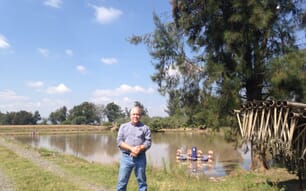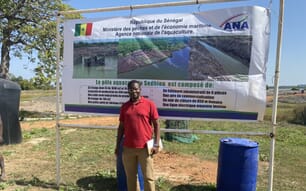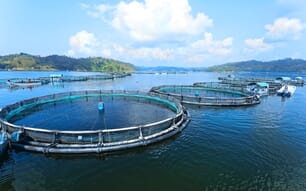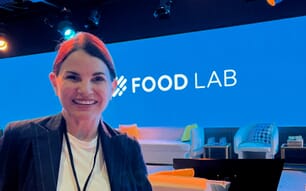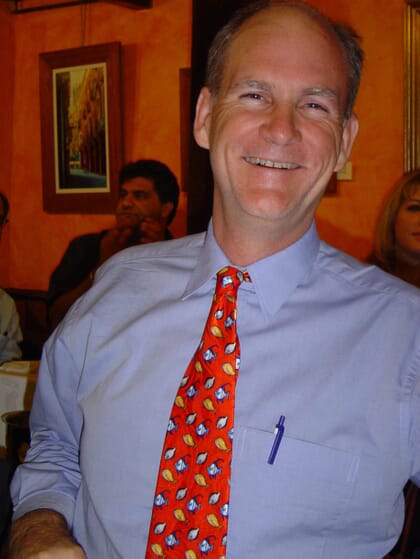
Fitzsimmons current research area spans insect-based feed ingredients, biodiversity projects and aquaculture education initiatives
While he’s probably best known for his extensive shrimp research, the university projects that he currently leads include research into insect-based feed ingredients for use in the Kenyan tilapia sector; aquaponics research; and a breeding and restocking of an endangered local species, the Sonoran sucker, to a number of waterways in Arizona. He is also working on a proposal with the USDA to provide practical aquaculture skills to a new generation of aquaculture students in high schools, community colleges and universities in Arizona, California and Washington State.
Meanwhile he also continues to co-chair the F3 Feed Challenge – an initiative that recently awarded $100,000 in prizes each to Star Milling Co, Empagran and Jiangsu Fuhai Biotech Co, for their efforts to produce or use feeds that contain no wild-caught fish. And he expects a new challenge to be launched early 2023.
Highlights of 2022
“One highlight has been the continued growth in aquaculture production for most of the key species and in the early part of the year there were also really good prices for salmon, shrimp and tilapia. I also think we saw good progress in terms of lower costs of production in the early part of the year, before inflation kicked in,” Fitzsimmons reflects.
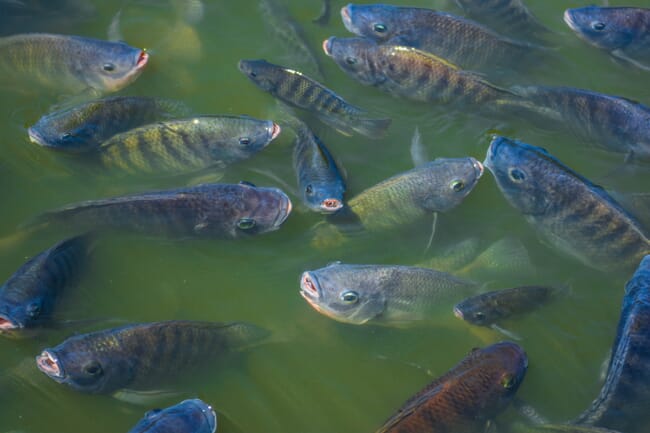
Fitzsimmons cited strong tilapia prices at the start of 2022 as a key highlight for the year
“Another thing has been the continued interest in RAS and in-pond raceway systems, not only for salmonids but also for warmwater species. While there have been a few high profile missteps a lot of other RAS producers are coming along under the radar,” he adds.
“The third thing has been the rapid scaling up of alternative feed ingredients. Insect companies are still expanding, the big producers keep leapfrogging each other; in single-celled proteins you’ve got Calysta opening up their FeedKind plant in China; you’ve also got Scoular and others with barley and corn protein concentrates and putting quite a bit more product into the market. It’s been pretty positive, especially as fishmeal prices have gone up and supply has gone down,” he continues.
“As they continue to scale up I think this will help moderate the upward pressure on prices for all the aquafeeds,” he suggests.
On a slightly irreverent note, Fitzsimmons also mentions a recent Fish Free Feed rap that was released this year as part of the F3 Challenge. Launching at the GOAL conference in Seattle, the song caused quite a stir. Garnering an – almost – universally positive reaction.
“One of the conference sponsors is the IFFO/Marin Trust people – the conference organising staff worried that IFFO might take offence and didn’t want us to play it, so we had to edit out the one line in the song about banning fishmeal before playing at the conference*. Even though it’s a lot more mild than what most of the world is saying about the fishmeal industry’s links to slavery, over-fishing, corruption and bribing officials,” he points out, with a chuckle.
The negatives of 2022
While Fitzsimmons is largely positive about 2022, he was by no means unaffected by a number of negatives – both personal and professional.
“For me personally one of the worst was losing John Connelly, president of the National Fisheries Institute [who died in November at the age of 61]. He was a good friend of mine and I thought he did great things for seafood in the US – both wild-caught and aquaculture. He’ll be very sorely missed,” Fitzsimmons muses.
Another has been the recurring – often conflicting – political interventions in net pen aquaculture in the Pacific Northwest. This came to a head most recently with the decision to terminate Cooke Aquaculture’s licence to grow native steelhead in the Puget Sound – a licence that they’d been granted only two years previously as an alternative to farming non-native Atlantic salmon in the region. It will lead to the loss of 34 direct jobs and the slaughter of 332,000 juvenile fish which were due to be stocked at the sites.
“The giant mess with net pen farming in British Columbia and Washington State has been one goof up after another, causing people to lose their jobs and kill fish that didn’t need to be killed. It’s always fun to bash the billionaires and the big multi-national corporations but politicians don’t seem to realise that it’s real people who work for those multinationals and they’re the ones who end up getting hurt,” he reflects.
The third lowlight for Fitzsimmons, is one that most people will be aware of.
“The inflation along with the reduced sales of seafood in the latter part of the year has been another issue. Costs have been bumping up globally, which has hit everybody. Consumers have had to change their buying habits, and seafood – especially high value seafood – has been one of the losers, as people look for lower cost items,” he explains.
“Although I have heard that pangasius and tilapia, which tend to be on the lower price scale, have actually seen a jump in demand and seem to be doing better,” he adds.
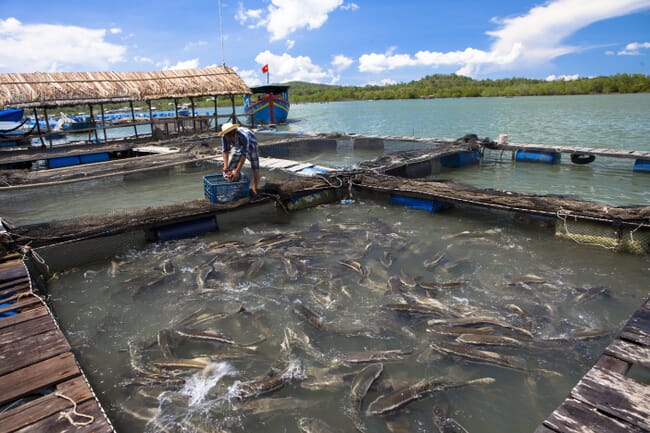
Fitzsimmons believes that demand for pangasius and tilapia have strengthened as inflation sets in
Outlook for 2023
While Fitzsimmons is largely optimistic about the coming year, he does have a number of concerns – not least related to the continuing poor performance of some of the flagship RAS farms in the US, which could dent investor confidence in, and public perception of, the industry.
“I do worry that some of the high profile RAS producers will have some stumbles and it’s going to look bad for the aquaculture sector as a whole. I hope those are kept to a minimum,” he reflects.
His largest worry is ensuring that enough skilled workers with hands-on experience can be trained up at a rate to match the growth of these intensive operations.
“So many of these projects have popped up in the last year or two that I worry there are not enough well trained operators and staff. There aren’t that many RAS experts and even if you hire one or two you need to supervise the people who are less skilled, which is why I think we need more high school and community college people who have a much better feel for how these systems work and can come in to supervisory, middle management roles,” he argues.
“It takes a long time to give people both education and hands-on experience – it’s been a problem in aquaculture for at least 15 years with the general intensification of aquaculture and we need more of them, globally,” he adds.

Fitzsimmons wants more high-skilled workers will be trained and gain experience as the aquaculture industry expands © University of Arizona
However, he is generally positive in his outlook.
“I think the inflation is going to be coming down – in part because the banks are increasing interest rates to slow the economy. It’s going to be painful, especially for the little guys – people are going to be laid off from work – but I think it’s going to succeed. So, I think we’ll see seafood sales, particularly of aquaculture products, going up. Inflation and feed costs will settle down as some of the other countries that have planted [feed crops such as wheat and soy] to take advantage of the high prices caused by disruptions in Ukraine and Russia will be harvesting in the coming months,” he suggests.
“I think wild-caught seafood will have problems due to shrinking subsidies. But this won’t affect aquaculture so much as it most of it doesn’t get many subsidies – other than a few, such as marketing and tax subsidies in China. The first few months of 2023 might be challenging but, for the year as a whole I’m pretty positive – for feed prices and for aquaculture product prices,” he concludes.
*After this article was published Steven Hedlund, from the Global Seafood Alliance, wrote to The Fish Site to clarify: "IFFO and MarinTrust did not sponsor GOAL 2022. I personally asked Kevin and his team to edit out two parts of the video that I felt were not in line with the spirit of the GOAL conference, a pre-competitive space in which the challenges and opportunities facing aquaculture and fisheries are addressed in a constructive manner. We appreciate F3’s sponsorship of GOAL 2022, and Kevin has been a valued participate of the GOAL conference since the very beginning more than two decades ago. But it is GSA’s conference, and I felt that some of the language used in the video, though tongue in cheek, would rub some people the wrong way, so Kevin and his team kindly edited it out."

